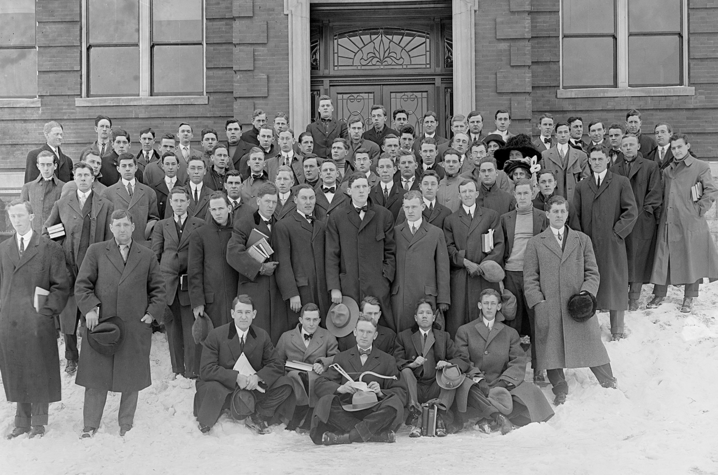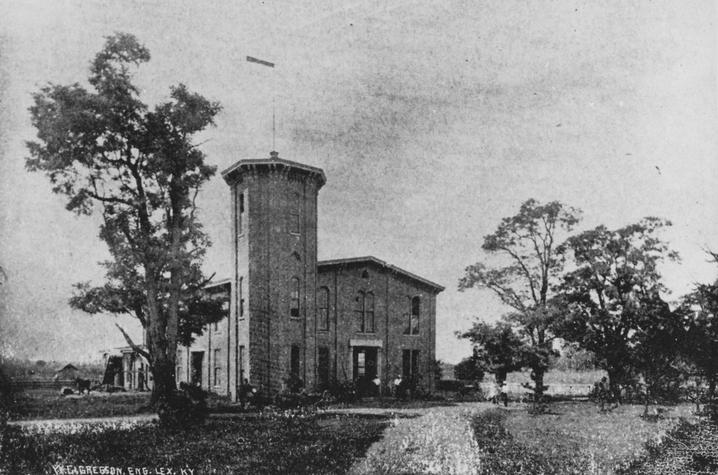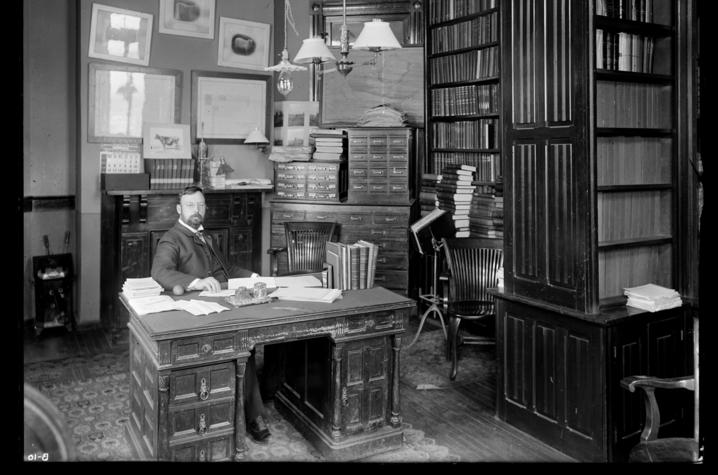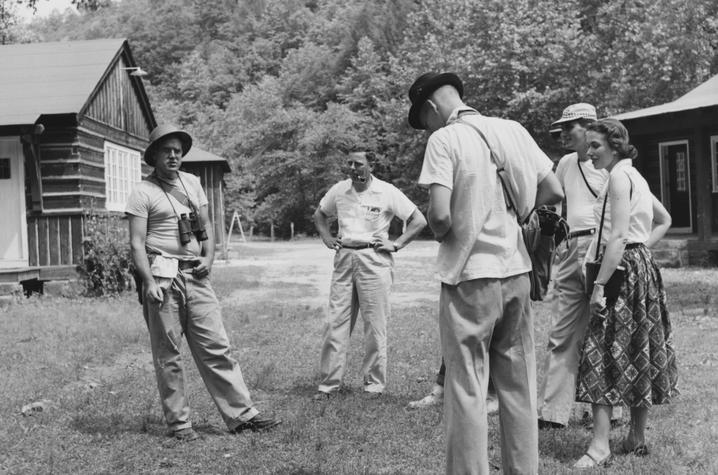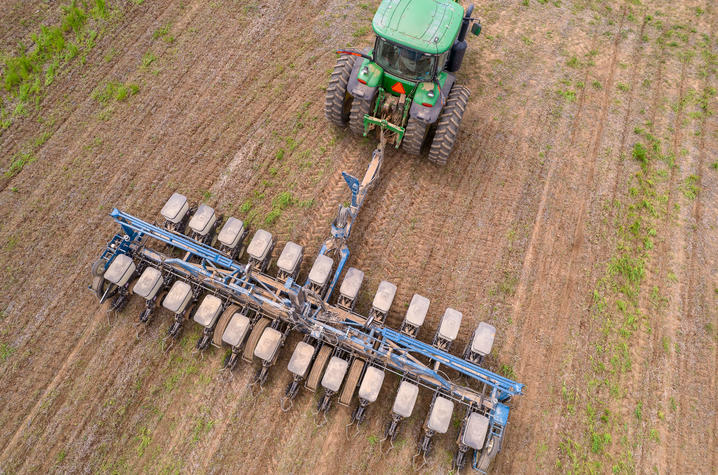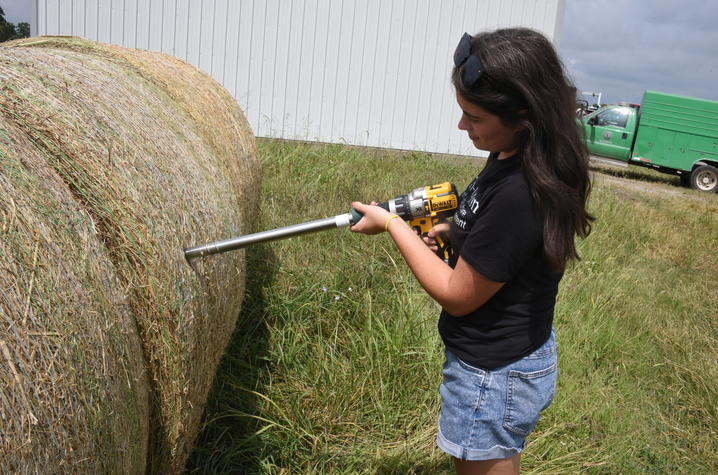Celebrating 160 years of the University of Kentucky — rooted in agriculture, service to the Commonwealth
LEXINGTON, Ky. (Feb. 21, 2025) — One day, working in the field at the University of Kentucky Research and Education Center (UKREC) at Princeton, Whitney Peck wondered if she should get a college degree.
As a high school student, she was already working part-time for the UKREC forage team and managed a cattle operation with her dad. She knew cultivating her family farm in Fredonia, Kentucky, was her primary career goal.
“Maybe college wasn’t for me because I wanted to stay at the farm,” Peck remembers explaining to her boss and mentor Chris Teutsch, UK Cooperative Extension forage specialist.
Teutsch said he gave her the advice he gives all students: Give the Martin-Gatton College of Agriculture, Food and Environment (CAFE) “serious consideration.”
Peck did — and now, as a UK sophomore majoring in animal sciences with an agricultural economics minor, she understands that “education has its impact.”
After 160 years of making an impact, the University of Kentucky celebrates its Founders Day, Feb. 22, 2025. Founded as a land-grant institution in 1865, UK continues to advance agriculture through the Martin-Gatton CAFE.
“Our dedicated faculty and staff are committed to preparing students for success in a wide range of careers, equipping them with the knowledge and skills to tackle the challenges of tomorrow,” said Laura Stephenson, dean of Martin-Gatton CAFE and vice president for land-grant engagement.
‘Creative legislation’: The Morrill Act of 1862
In 1862, President Abraham Lincoln signed into law the Morrill Act, which established the country’s land-grant system. The federal government provided states with land that could be sold to fund the establishment of colleges to teach agriculture and mechanical arts.
“The land-grant university system is being built on behalf of the people, who have invested in these public universities their hopes, their support and their confidence,” Lincoln said.
At a 100th anniversary celebration in 1962, guest lecturer Vernon Carstensen, a UK history professor, called the Morrill Act “one of the truly creative pieces of Congressional legislation.” Read more from ExploreUK here.
In 1865, the Kentucky General Assembly made use of this legislation and established the Agricultural and Mechanical College of Kentucky in Lexington. It was originally a publicly chartered department of Kentucky University, a private college owned by the Christian Church, but that partnership was later severed. In 1908, the independent Agricultural and Mechanical College was renamed State University; in 1916, it became the University of Kentucky.
'A decided step’ toward an agriculture college
Though dedicated in name to the agricultural and mechanical arts, the new Kentucky institution at first lacked formal agriculture instruction. For almost two decades, students learned “practical agriculture” through labor on the college farm.
In 1881, the college hired its first agriculture professor, William Ashbrook Kellerman. UK President James K. Patterson was very happy to announce this, according to “The College of Agriculture of the University of Kentucky: Early and Middle Years, 1865-1951” by J. Allan Smith.
“For the first time since the establishment of the College a decided step has been taken in the direction of realizing the Congressional idea of instruction (theoretical and practical) in scientific agriculture,” Patterson said.
This marked the beginning of the Department of Agriculture; when the college gained university status in 1908, it became the College of Agriculture.
And so it remained for more than a century, until the name changed to the College of Agriculture, Food and Environment in 2013.
“We are aligned with the wider and more diverse interests of those we serve, including a new and rapidly growing population of undergraduate students,” said Scott Smith, dean from 2001 to 2013, at the time of the name change. “And across Kentucky, many now see agriculture to include not only farming, but also agribusinesses, and the full reach of food systems from local to global.”
Through growth and change, the college has remained influential — and, in turn, the community has continued to support and shape it.
In 2023, The Bill Gatton Foundation made a transformational $100 million gift to the college, the largest in UK history. To honor Bill Gatton’s parents, Edith Martin and Harry W. Gatton Sr., the college was renamed the Martin-Gatton College of Agriculture, Food and Environment.
Thanks to the generosity of partners and donors, Martin-Gatton CAFE is in a dynamic period of growth and transformation — building the future with capital projects that aim to enhance the college’s capacity to improve lives in Kentucky and beyond.
Today, with a student population of 2,600, Martin-Gatton CAFE continues its excellent tradition of educating students.
Randy Weckman worked for the college from 1973 to 2017, as a member of the agricultural communications team (formerly called the Department of Public Information) and as an associate professor.
He’s also the father of two College of Agriculture graduates; one is a physician and the other owns five restaurants. Not everyone can or will be a farmer, and Weckman said the college “excels” at preparing graduates for other career paths, including professional school.
College personnel also have “a high personal touch” with students, Weckman said, which prepares graduates for success.
“They do well because they were nurtured as only the College of Agriculture can do,” he said.
The “three-legged” land-grant mission
UK’s agricultural impact focuses on teaching, research and extension — what agricultural educators have historically called “the three-legged stool,” according to J. Allan Smith. The Morrill Act established teaching; two additional pieces of federal legislation would formalize the other legs.
In 1887, the United States Congress passed the Hatch Act, which provided federal funds for state agricultural experiment stations. The Kentucky Agriculture Experiment Station had already been operational for two years, with Melville Scovell as its first director.
Since 1886, when the state legislature directed the station to assume responsibility for analyzing and labeling commercial fertilizers sold in the state, the Kentucky Agriculture Experiment Station has performed an important regulatory function.
Today, researchers work with grants and contracts reaching more than $47 million a year on 20,000 acres of UK farms and forests across the state, including the Robinson Center in Breathitt County and the Research and Education Center at Princeton.
The Smith-Lever Act of 1914 granted financial aid to land-grant colleges to share “useful and practical information” with their state populations. This act formalized and provided a framework for the UK Cooperative Extension Service, rooted in agricultural clubs and societies that already went back a century or more.
Extension work quickly expanded, including the hiring of additional personnel across the state who educated their communities on topics in agriculture and home economics. Today, UK has an extension office and agents in all 120 counties, strengthening Kentucky’s people, farms, food systems and natural resources.
The local connections built between UK experts and Kentucky’s farming communities have led to some of the state’s most significant agricultural breakthroughs.
In 1962, extension agronomist Shirley Phillips observed the no-tilled corn field and spraying program of UK alumnus Harry Young Jr. Thanks to Phillips’ efforts, the agronomy department established itself as a world leader for research in no-tillage agriculture.
According to a 2021 study, the number of no-till farming acres worldwide had grown to 507.6 million by 2019, or 14.7% of total global cropland, with no-till adoption continuing to grow by roughly 25 million acres per year.
In 2001, UK experts responded to the sudden outbreak of Mare Reproductive Loss Syndrome (MRLS), which caused a high number of late-term abortions in equine mares across Central Kentucky. Economic damage to the industry was estimated at more than $300 million.
UK researchers found the cause to be related to the ingestion of the barb-haired eastern tent caterpillars, which had hatched in unusually high numbers in the area during the spring. UK’s extensive research into MRLS has led to widely recognized precautions and remedies across the equine industry.
“The UK Martin-Gatton College of Agriculture, Food and Environment has built a legacy of excellence through its three land-grant mission areas — advancing teaching, driving groundbreaking research and serving communities through extension,” Stephenson said.
Looking to the future after 160 years
From learning about all aspects of agriculture in her Issues in Agriculture, Food and Environment course to starting the Collegiate Cattlemen club, Peck has found and formed a valuable community during her time at UK.
During her breaks, she continues to work at UKREC in Princeton.
Still part of the forage team, she is working on a bale-grazing research study that started when she was still in high school — meaning she started undergraduate research before she was an undergraduate. She’s already had the opportunity to present at conferences, and the study will wrap up in March.
She might continue her education after earning her bachelor’s degree, but Peck knows one thing for sure: she’ll eventually head home to the farm in Fredonia as “an advocate for agriculture,” equipped with the knowledge and community she found at UK.
As a farmer herself, she has enjoyed learning about the resources UK offers through research and extension — resources that help people, like her and her dad, who encounter challenges with their family farm.
“I feel like most of the educational materials that we have for agriculture would not be possible without the University of Kentucky being here as a land-grant institution,” Peck said.
Building on 160 years of history, the Martin-Gatton College of Agriculture, Food and Environment aims to continue its excellent record of service.
“Our college has been a cornerstone of innovation, education and service to Kentucky,” Stephenson said. “As we honor our history, we remain focused on the future — continuing our mission to advance agriculture, support communities and prepare the next generation of leaders who will shape our Commonwealth."
As the state’s flagship, land-grant institution, the University of Kentucky exists to advance the Commonwealth. We do that by preparing the next generation of leaders — placing students at the heart of everything we do — and transforming the lives of Kentuckians through education, research and creative work, service and health care. We pride ourselves on being a catalyst for breakthroughs and a force for healing, a place where ingenuity unfolds. It's all made possible by our people — visionaries, disruptors and pioneers — who make up 200 academic programs, a $476.5 million research and development enterprise and a world-class medical center, all on one campus.





